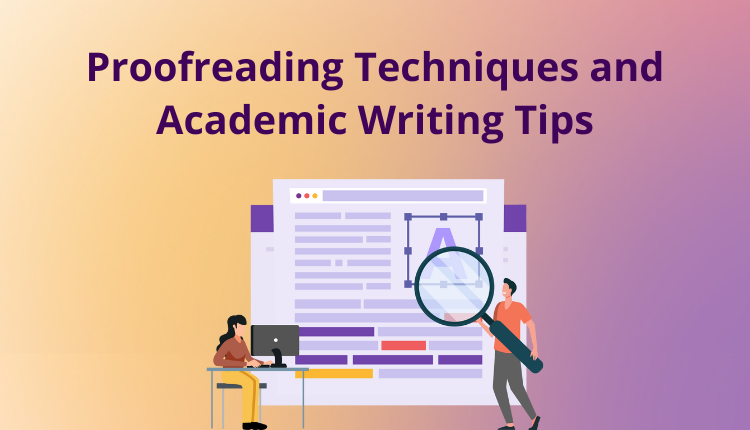Introduction
In academic writing, there is no room for vagueness or imprecision. You may be writing an article for a journal on immunotherapy or working on your thesis, but the value of a well-crafted piece cannot be underestimated. Enter proofreading—the last mile in the writing process that can make your work go from great to outstanding. So, what is proofreading all about? And how do you acquire this important skill? Let’s explore the realm of proofreading techniques and advice that not only improve your writing but also enable you to express your ideas confidently.
What is proofreading and why is it essential?
Proofreading is the last phase of writing. It entails going over a text very carefully to spot any errors in spelling, punctuation, and grammar. This careful process ensures that your ideas are conveyed clearly and effectively.
In academic writing, precision is crucial. A single typo or misplaced comma can alter the meaning of a sentence or undermine your credibility as a writer. Proofreading enhances clarity and professionalism, making it essential for anyone contributing to scholarly work.
Moreover, proofreading helps maintain consistency throughout your document. Whether it’s ensuring uniform formatting or using consistent terminology, this attention to detail strengthens your arguments and improves readability.
For authors seeking publication in reputable outlets such as an immunotherapy journal, perfect presentations are essential. Reviewers are not only concerned with content but also the quality of presentation. Spending time on careful proofreading can greatly improve your acceptance chances while demonstrating your commitment to excellence in academic scholarship.
Proofreading techniques
Good proofreading is what makes all the difference in scholarly writing. Begin by reading your paper out loud. This method will allow you to catch mistakes that may escape you when reading silently. Listening to the words will give you a new light on sentence structure and flow.
Next, print out your work. A hard copy provides greater concentration as you read for errors. Also, underlining revisions with a pen may be more effective than editing on screen. You might pick up on problems you did not notice on screen.
Using checklists is also an excellent technique. Make a list of typical mistakes on your subject matter or writing style, like grammar errors or formatting issues on immunotherapy journals. This focused approach makes you systematic and diligent.
Break between writing and proofreading sessions. This allows you to clear your mind on return, and it becomes simpler to identify mistakes and clumsy wording which can reduce the quality of your educational paper.
How Trinka Grammar Checker Can Help
Trinka Grammar Checker is a powerful tool designed specifically for academic writing. It goes beyond basic spell-checking, offering sophistication that meets the demands of scholarly work. Whether you’re drafting an article for an immunotherapy journal or any other academic publication, this tool ensures your language is precise and polished.
One of the most prominent features of Trinka is its capacity to recognize context-specific mistakes. Academic writing typically necessitates specialized vocabulary as well as refined phrasing. Trinka identifies these components, enabling you to use the correct words according to your topic.
In addition to that, it offers recommendations specific to improving clarity and coherence of your writing. What this means is that you’re free to concentrate on conveying complex concepts appropriately without worrying about grammar. The interface is easy to use and offers instant adjustments, so you can easily incorporate it into your process.
Trinka’s plagiarism detection feature provides an added degree of dependability to your proofreading process. Since the stakes are high in academia, ensuring originality in addition to grammatical correctness may significantly improve the quality of your submission.
Conclusion
Proofreading is a valuable skill for anyone involved in academic writing, especially for those seeking to publish in specialized fields like the immunotherapy journal. The significance of putting forward polished work cannot be emphasized enough; it not only reflects your credibility but also your dedication to excellence.
By using proper proofreading methods—reading aloud, checklists, and breaks—you can greatly improve the quality and clarity of your writing. Programs such as Trinka Grammar Checker make this even easier by giving real-time feedback on style and grammar so that you can concentrate on content and reduce errors.
The time invested in vigorous proofreading is worth it big time. It makes your concepts conveyed in a clear and professional manner. It is particularly important when writing for well-established journals where accuracy counts a lot. Adopt these practices on your next assignment and watch how they enhance the impact of your work in the academic world.

